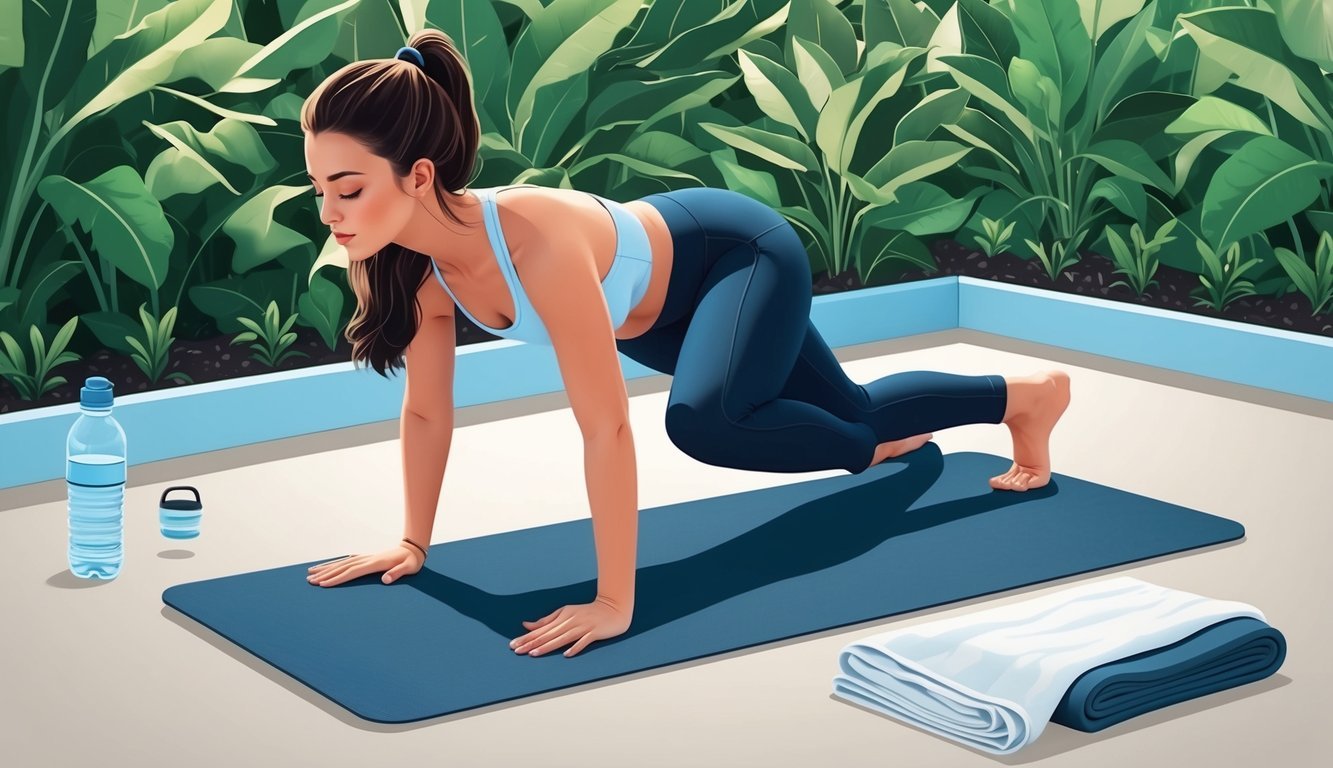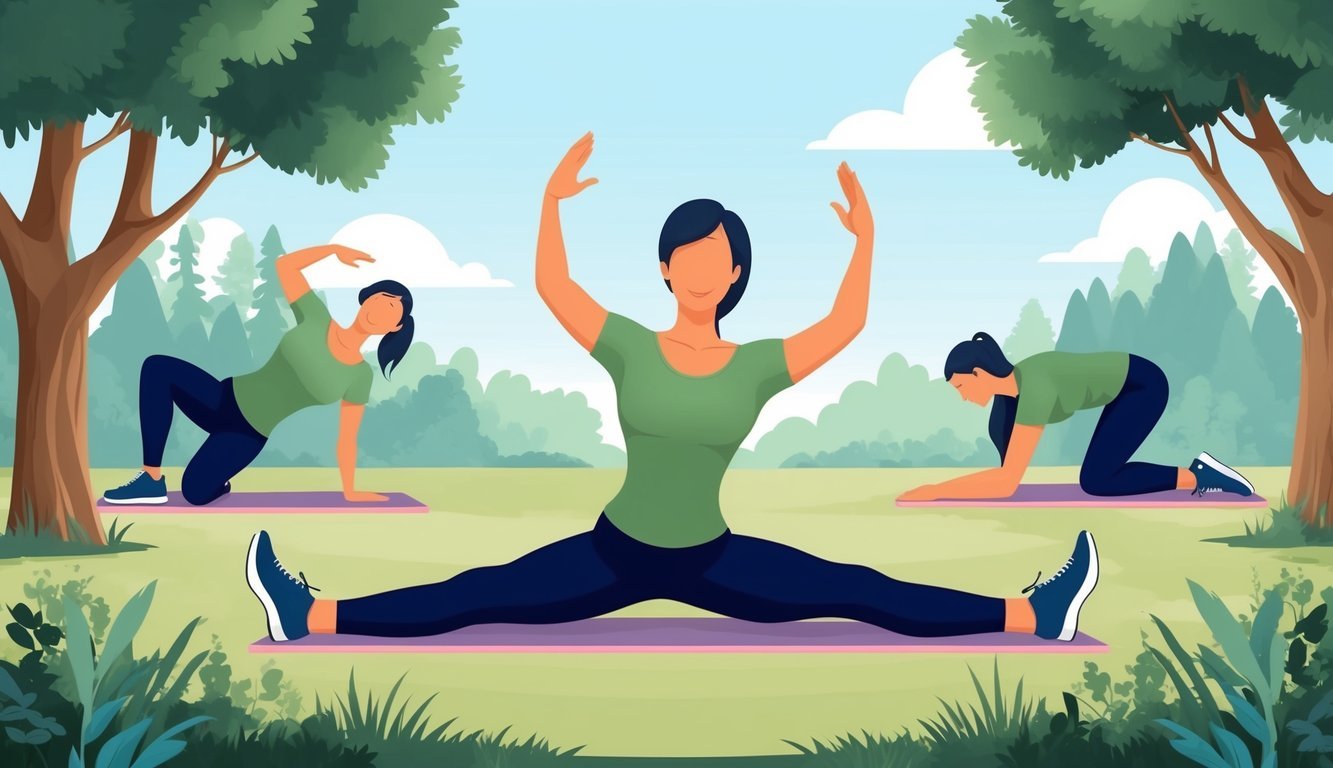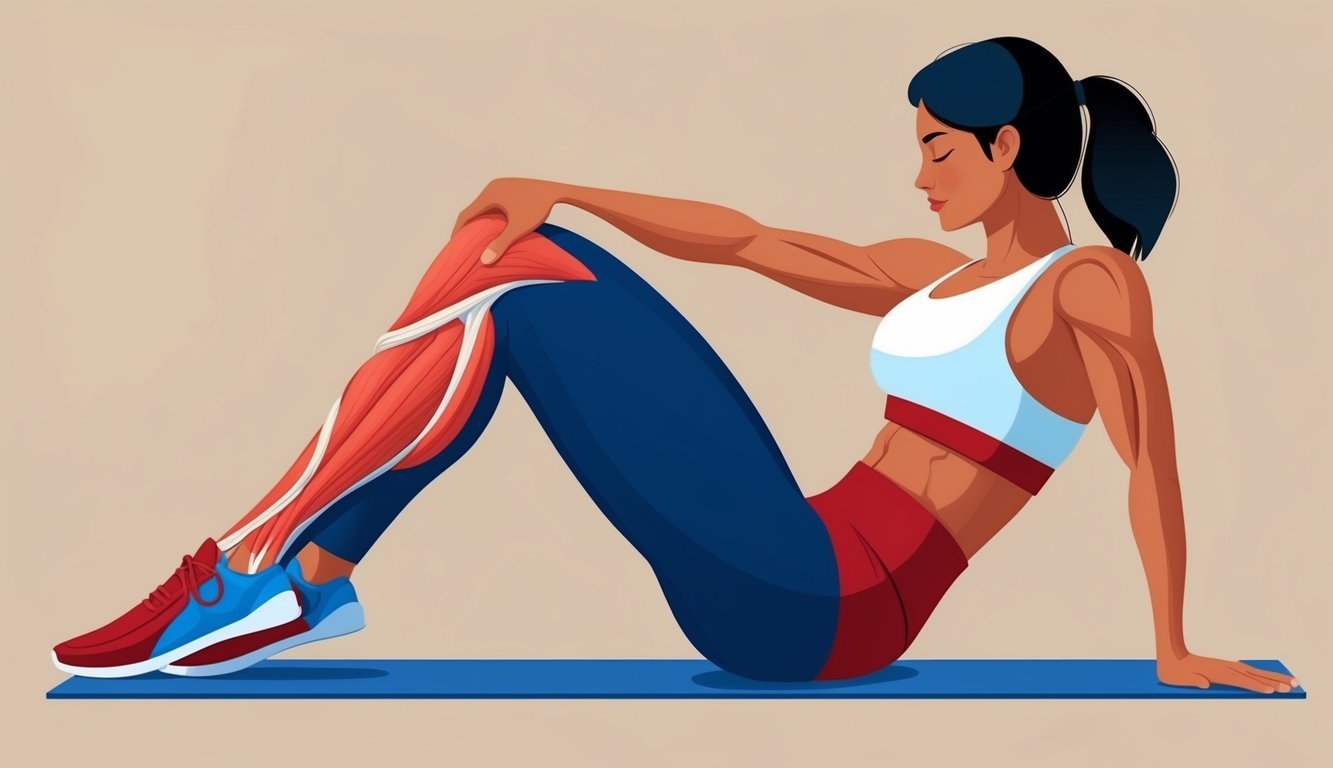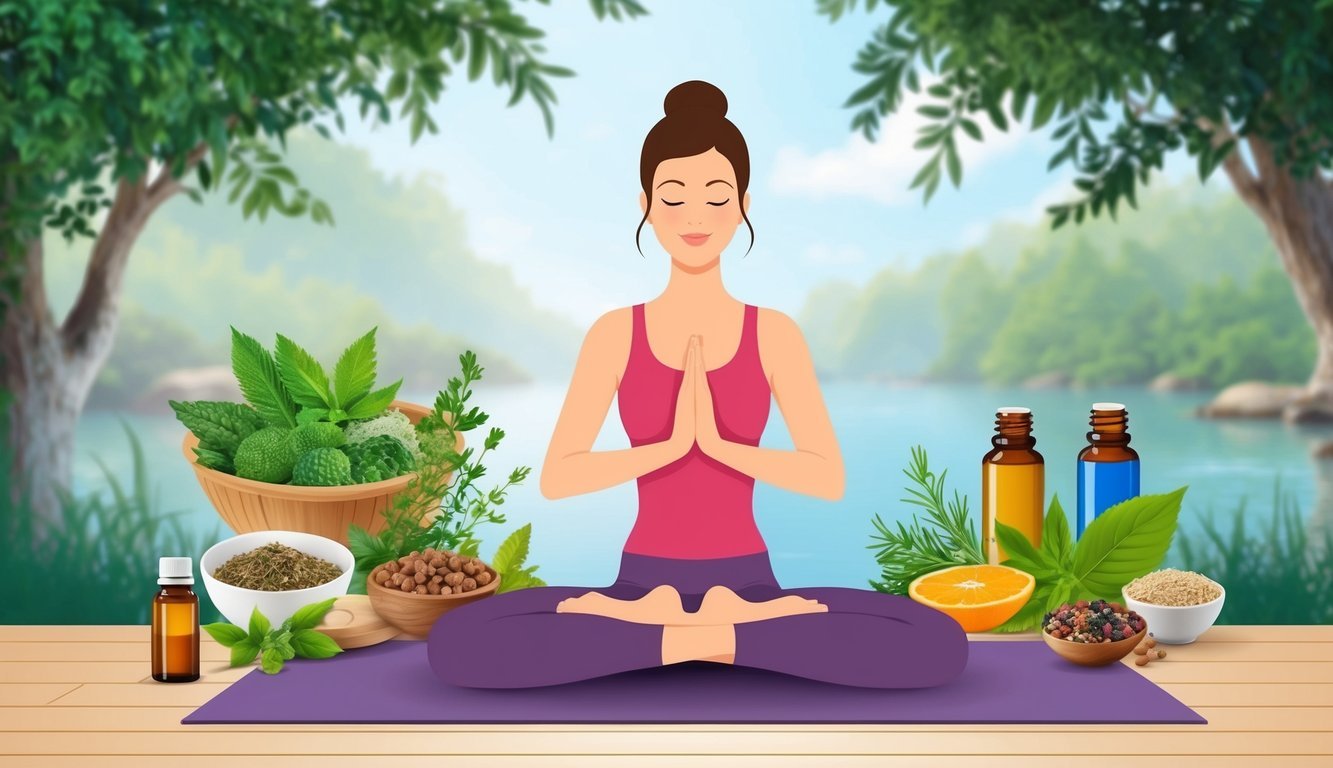Muscle cramps can be a real nuisance, whether you’re exercising or just going about your day.
I’ve experienced those sudden, tight jolts that can leave you wincing in pain and wondering what just happened. Several natural ways can help reduce muscle cramps and ease discomfort, making them manageable when they strike.

In this article, I’m going to share my top tips for tackling those pesky cramps.
From dietary changes to simple home remedies, there are effective strategies that can provide relief.
Whether you’re an athlete or just looking for everyday solutions, these tips might just help you out when you need it most.
1) Stay Hydrated
I can’t stress enough how important hydration is for reducing muscle cramps.
Staying well-hydrated helps maintain electrolyte balance, which is essential for muscle function.
When I feel a cramp coming on, I make sure to drink plenty of water throughout the day.
A simple guideline I follow is to drink half my body weight in ounces of water.
For example, if I weigh 150 pounds, I aim for about 75 ounces of water daily.
It’s also good to be cautious with caffeinated drinks.
I’ve noticed that too much caffeine can lead to dehydration and might contribute to muscle cramps.
In addition to water, I sometimes enjoy electrolyte-rich beverages, especially during hot weather or intense workouts.
They help replenish lost minerals and support my muscles effectively.
Banana Snack Attack
I’ve found that bananas are a fantastic snack when dealing with muscle cramps.
They’re rich in potassium, a mineral that helps maintain muscle function.
When I feel a cramp coming on, reaching for a banana often helps.
Not only are they easy to grab on the go, but they also taste great.
Plus, they provide natural sugars for a quick energy boost.
This can be especially handy during or after a workout.
Incorporating bananas into my diet has helped me reduce the frequency of cramps.
I often add them to my morning smoothie or just enjoy one fresh.
Even if I’m not cramping, bananas make a wholesome snack option.
I’ve noticed that staying hydrated alongside my banana intake boosts the benefits.
This combination keeps my muscles functioning well and prevents those annoying cramps from interrupting my day.
So, next time you’re feeling crampy, consider a banana for relief!
3) Magnesium-Rich Foods
Magnesium plays a crucial role in muscle function and can help reduce cramps.
I like to include magnesium-rich foods in my diet for this reason.
Leafy greens are an excellent source.
Spinach and Swiss chard are both foods I often turn to.
Just a half cup of cooked spinach provides about 78 mg of magnesium.
Nuts and seeds also pack a punch.
Almonds and pumpkin seeds are not only tasty but contribute significantly to my daily magnesium intake.
A small handful can be a great snack option.
Legumes, such as black beans and lentils, are both nutritious and high in magnesium.
I find adding them to salads or soups boosts both flavor and health benefits.
Lastly, consider dark chocolate.
Not only is it delicious, but it also contains magnesium.
Just a small square can satisfy my sweet tooth while supporting muscle health.
4) Warm Up Before Exercise

I can’t stress enough how important it is to warm up before exercising.
Taking just a few minutes to prepare my muscles can really make a difference.
Warming up helps increase blood flow to my muscles, making them more flexible and ready for movement.
This simple step can also improve my performance and reduce the risk of injury.
Additionally, it can help reduce muscle soreness after workouts, allowing me to recover faster and stay consistent with my fitness routine.
A good warm-up increases blood flow to my muscles and gets them ready for activity.
I usually start with some light aerobic exercises, like jogging in place or brisk walking.
This helps elevate my heart rate gradually.
After that, I incorporate dynamic stretches.
Movements like leg swings and arm circles help loosen my muscles and joints.
Stretching before I exercise reduces the risk of cramps significantly.
If I’m heading into a more intense workout, I pay extra attention to the muscles I’ll be using.
Gradually progressing in intensity not only feels better but also helps prevent those annoying cramps from creeping up.
Making warming up a routine part of my exercise helps me feel more prepared and confident.
It’s a habit that I’ve found really pays off during my workouts.
5) Epsom Salt Bath

I really enjoy taking Epsom salt baths when dealing with muscle cramps.
Epsom salt, or magnesium sulfate, is known for its muscle-relaxing properties.
Soaking in a warm bath with Epsom salt can help relieve tension and soreness.
I typically add about two cups of Epsom salt to my warm bath.
The magnesium helps relax the muscles, which can ease cramps effectively.
I soak for about 15 to 20 minutes to get the benefits.
It’s essential to stay hydrated while enjoying this bath.
I always drink water before and after to keep my body in balance.
The warm water, paired with Epsom salt, promotes circulation, which can aid in reducing inflammation.
When I’m feeling crampy or stressed, this simple routine works wonders for me.
Plus, it’s a nice way to unwind after a long day.
6) Stretch Regularly

I can’t stress enough how important stretching is for preventing muscle cramps.
When I incorporate daily stretches into my routine, I notice a significant reduction in cramp occurrences.
Stretching improves flexibility and increases blood flow to my muscles.
It’s a simple yet effective way to keep my muscles relaxed and less prone to cramping.
I like to focus on the muscles that tend to cramp the most, like my calves and hamstrings.
Holding each stretch for about 15-30 seconds makes a real difference in how my body feels.
Incorporating stretches after physical activity is crucial.
It helps my muscles recover and reduces tension that might lead to cramps later.
Remember to stay hydrated while stretching; it supports muscle function and might help eliminate cramps.
I try to make stretching a part of my everyday routine so it becomes second nature.
Just a few minutes can really go a long way!
7) Adequate Rest

When I experience muscle cramps, I’ve found that giving my body enough rest is crucial.
Muscles need time to recover, especially after intense activity.
I try to listen to my body.
If I’m feeling fatigued, I avoid overexerting myself.
This not only helps prevent cramps but also reduces the risk of injury.
During rest periods, I focus on hydration and nutrition.
Staying well-hydrated supports muscle function, and eating foods rich in electrolytes can be beneficial.
I also make sure to stretch gently before and after workouts.
This keeps my muscles flexible and can help reduce cramping episodes.
Finding a good balance between activity and rest has made a noticeable difference for me.
Prioritizing rest helps me feel stronger and more energized in my routine.
Understanding Muscle Cramps

Muscle cramps are those sudden, involuntary contractions that can be pretty uncomfortable.
They can occur for various reasons, and understanding them can help in effectively managing and preventing them.
What Causes Muscle Cramps
Muscle cramps can arise due to several factors.
Commonly, they stem from prolonged physical activity, dehydration, or muscle fatigue.
Sometimes, they may be linked to nutrient deficiencies, particularly with electrolytes like potassium and magnesium.
Hormonal imbalances might also play a role.
For instance, some hormonal disorders can lead to electrolyte imbalances, which can trigger cramping.
My personal experience is that cramps often happen unexpectedly, usually at night or during exercise, making them a nuisance.
Additionally, certain medical conditions can contribute to muscle cramps, like diabetes or thyroid issues.
If cramps persist, consulting a doctor might be wise for an accurate diagnosis.
Common Triggers and Prevention
There are several common triggers for muscle cramps that I’ve learned to recognize.
One of the main culprits is dehydration.
Staying well-hydrated, especially during exercise, is crucial.
Here are some key triggers to be aware of:
- Overexertion: Pushing myself too hard during workouts can easily lead to cramps.
- Prolonged Sitting: Staying in one position for too long can tighten muscles.
- Cold Temperatures: Sometimes, just being in a chilly environment can cause cramps.
To help prevent muscle cramps, I find it beneficial to stretch regularly, especially before and after physical activity.
Incorporating foods rich in magnesium and potassium into my diet also helps.
Keeping a water bottle handy and ensuring regular breaks during prolonged activities can make a significant difference.
Natural Remedies and Lifestyle Changes

Managing muscle cramps can often be accomplished with simple adjustments in daily habits.
Staying hydrated, eating a balanced diet, and incorporating stretching into my routine can make a significant difference.
Hydration and Diet
Keeping myself hydrated is crucial.
Dehydration can lead to muscle cramps, especially after exercising or during hot weather.
I aim for at least 8-10 cups of water daily, and I pay extra attention when I’m active.
In addition to hydration, my diet plays a key role.
Consuming foods rich in magnesium, potassium, and calcium can help prevent cramps.
Some of my go-to foods include:
- Bananas (high in potassium)
- Spinach (rich in magnesium)
- Dairy products (great source of calcium)
By focusing on these nutrients, I keep my muscles happy and reduce the chances of cramping.
Stretching and Exercise Tips
I use stretching as my secret weapon against cramps.
Before and after workouts, I dedicate time to stretch my muscles gently.
For my legs, I find that calf stretches and hamstring stretches work wonders.
Regular exercise also helps me.
Activities like yoga or Pilates enhance flexibility, reducing the risk of cramps.
I try to hold each stretch for 15-30 seconds and repeat several times.
A consistent stretching schedule keeps my muscles pliable and strong.
So whether I’m warming up or winding down, I always make room for those essential stretches.

